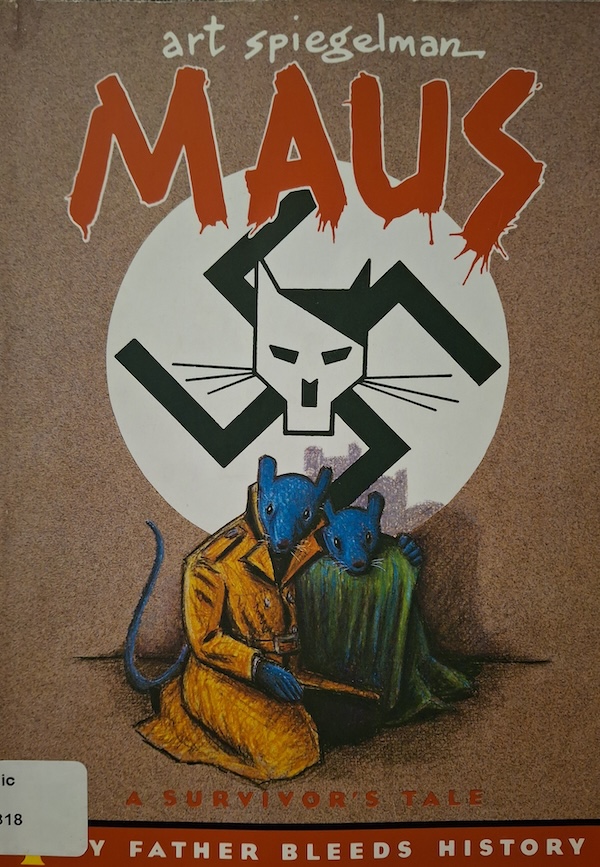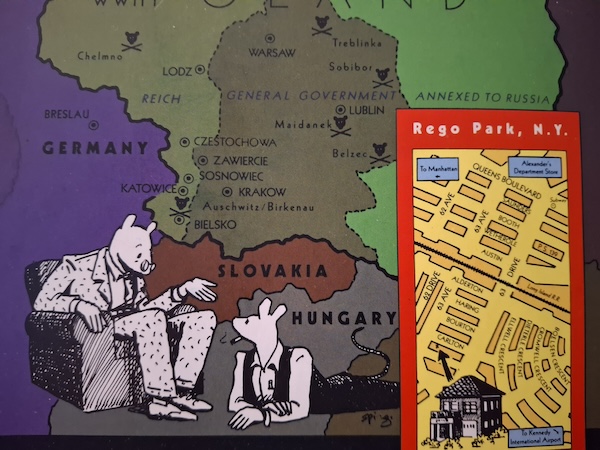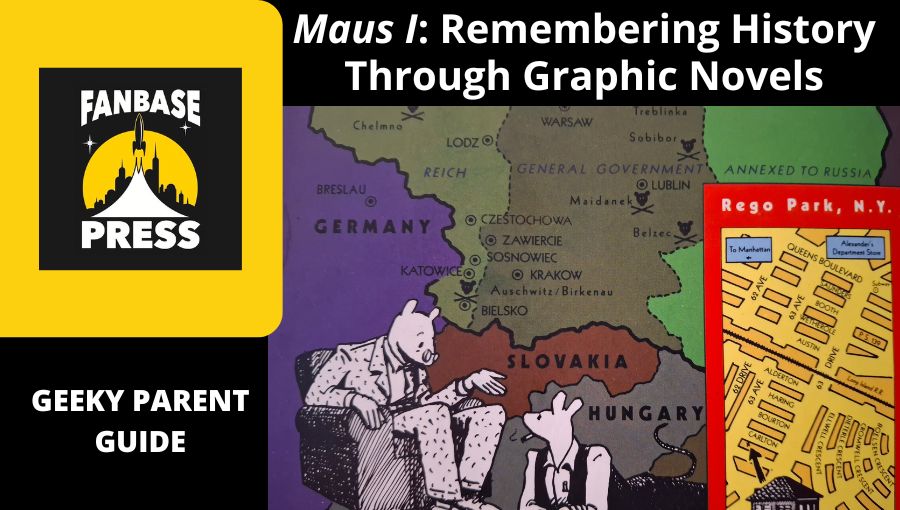Stories can be powerful tools to depict important moments. Whether it’s a fictional character presenting a sense of trustworthiness, life lessons learned through difficult choices, or a world where wondrous or frightening things happen, storytelling is a necessary art to help us learn about our humanity. Maus: Volume I is a graphic novel that depicts a tragically horrible point in history which is vital for everyone to learn, especially our children.
Maus Volume 1: A Survivor’s Tale: My Father Bleeds History
Writer/Artist: Art Spiegelman
Publisher: Pantheon

Maus is a biographical account of creator Art Spiegelman as he interviews his father Vladek Spiegelman about his experiences from World War II and the Holocaust. The story presents Jewish people as mice, while the evil Nazis are cats. This artistic style makes the story more approachable for a younger audience, despite the atrocities experienced by any Jewish person during that time.
Although the goal isn’t necessarily to make anything “approachable,” it is important for everyone to understand history and do our best to acknowledge the horrors seen and those who fought against it. The aim is to recognize any semblance of similar hate so as to not repeat those same brutalities again and again.
Art Spiegelman presents Maus within two frameworks: one where he’s visiting and interviewing his father, and the other with illustrated scenes of Vladek’s past where Nazis controlled the Jewish population and ultimately did what they could to kill them. Not only is it a troubling reality regarding Vladek’s life, it’s an ongoing struggle for Art to fully understand the gravity of what his father went through.
Why Does This Story Matter?
Maus is an award-winning graphic novel (Pulitzer, New York Public Library Books for the Teen Age, ALA Best Books for Young Adults) for a reason. Its tragic telling from Vladek to Art is heart wrenching, bleak, and highlights how cruelty has no boundaries. His life was not easy, and the horrible things he went through cannot (and should not) be forgotten.
In the simplest of forms, kids and teenagers understand what cruelty looks like. My own kids have wondered in their lives how someone can treat others so badly, but it is important for them to understand how far people like the Nazis were willing to go to spread their malice onto the world. Maus depicts those harsh realities in a way that anyone who reads it can understand how awful the world can be – and why it is important to never forget those who lost their lives in such horrific ways.
Vladek tells Art what it was like to live each day in fear as friends, neighbors, or family members were captured by Nazis and taken away to various places. It’s also a terrifying notion to know many of those instances meant never seeing those people again. Trying to imagine what that must feel like to lose those loved ones like that is a devastating pill to swallow.
On top of what happened in the past, readers get to know Vladek and understand who he is and perhaps why he makes present-day choices the way he does. Being frugal, making do with what he has, like not needing a second container of salt (let alone opening a new one while there’s plenty left in the first), helps to illustrate how surviving on very little through those years during the Holocaust give credence to his life as an older father. He wants to spend less money to leave more for his son, knowing he can make do with less things after surviving such tragedies.

Should Your Child Read Maus?
As a parent, it will be up to you to determine how old your kid will be to learn about world history and the horrible things that have happened in it. Although my kids are generally familiar with what the Nazis did, I’ll encourage them to read Maus. My kids are currently 12 and 10, and I recognize their maturity and believe they’re capable of taking this story to heart, although knowing it will generate sadness. It is never an easy topic to broach; the treatment of Jewish people by Nazis is astoundingly disturbing and incredibly challenging to come face to face with.
However, it is important to recognize the harshness this world can present. Our children need to be given the tools to recognize and denounce hate – which is equally relevant today – and, hopefully, find themselves as adults in a world where coming together to share our differences is the epitome of our existence. To love what makes each person unique, to share in the things we connect on, the world needs to understand its past (and Maus) to better realize the hope we need for the future.
Maus: Volume 1 depicts the life of Art’s father, mother, and brother (who did not survive the war) and leads readers to their ultimate capture before being sent to Auschwitz. Maus: Volume 2 continues Vladek’s tale through Auschwitz and beyond where getting through it does not mean the trauma ends.
If you or your kids are interested in reading Maus, consider locating it at your local library, as this was my option for reading this graphic novel. If you would like the Geeky Parent Guide to cover more comics and graphic novels, highlighting why stories matter so much in our lives, please leave a comment below or reach out to creator Travis Lakata on social media.

